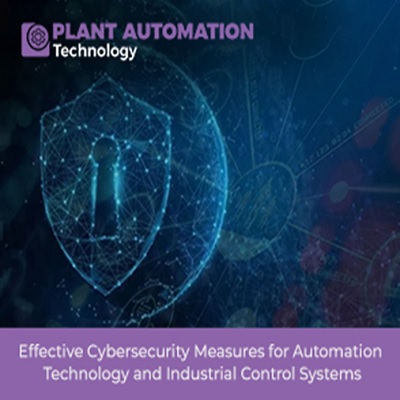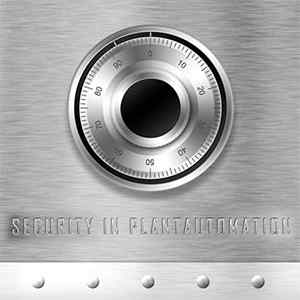Effective Cybersecurity Measures for Automation Technology and Industrial Control Systems

Introduction
In the modern era, automation technology and industrial control systems have become indispensable for enhancing efficiency and productivity in numerous sectors. However, as our world becomes increasingly interconnected and reliant on digital systems, cyber threats have escalated considerably. Safeguarding automation technology and industrial control systems from cyber-attacks has now emerged as a critical priority for organizations. This article explores the significance of cybersecurity measures for these systems. It emphasizes essential strategies to protect critical infrastructure and maintain automated systems' secure operation.
I. Understanding the Cybersecurity Landscape
Before exploring cybersecurity measures, it is essential to comprehend the evolving cybersecurity landscape surrounding automation technology and industrial control systems. Cyber threats range from ransomware attacks to unauthorized access attempts and data breaches. These threats not only jeopardize data integrity and availability but disrupt industrial processes, leading to financial losses and compromised safety.
II. Essential Cybersecurity Measures
A. Robust Network Segmentation: Implementing a well-designed network architecture that segregates critical automation technology and control systems from non-essential networks can minimize potential breaches. Segmentation prevents unauthorized access and limits threats' lateral movement within the network.
B. Access Control and Authentication: The implementation of robust access control mechanisms, including multi-factor authentication (MFA) and role-based access control (RBAC), is crucial to ensure that only authorized personnel can access automation technology and control systems. By employing such measures, the risk of unauthorized access and malicious activities is significantly reduced.
| Also Read: Safeguarding Your Smart Manufacturing: Tackling Cybersecurity Challenges |
C. Regular Vulnerability Assessments and Patch Management: Conducting periodic vulnerability assessments and promptly applying security patches to operating systems, applications, and firmware are vital for addressing potential vulnerabilities and reducing the attack surface of automation technology and control systems.
D. Intrusion Detection and Prevention Systems: Deploying intrusion detection and prevention systems (IDPS) helps identify and block malicious activities, providing real-time alerts on potential cyber threats. These systems monitor network traffic and system logs to detect anomalies and prevent unauthorized access.
E. Security Information and Event Management (SIEM): Utilizing SIEM solutions enables centralized monitoring and analysis of security events and logs, facilitating early detection of cyber threats. SIEM tools provide valuable insights into potential attacks, enabling proactive incident response and threat hunting.
F. Employee Awareness and Training: Educating employees about cybersecurity best practices, such as recognizing phishing attempts and following secure protocols, is critical. Regular training sessions and awareness campaigns foster a cybersecurity culture throughout the organization.
III. Collaborative Partnerships and Industry Standards
Collaboration among industry stakeholders, government bodies, and cybersecurity experts is essential in establishing comprehensive cybersecurity measures for automation technology and industrial control systems. By sharing threat intelligence, best practices, and lessons learned, organizations can stay updated on emerging threats and adopt effective countermeasures. Compliance with industry standards and regulations, such as the ISA/IEC 62443 series and NIST Cybersecurity Framework, provides a framework for implementing robust cybersecurity practices.
IV. Secure Remote Access
With the increasing prevalence of on-site work and the necessity for continuous monitoring and maintenance of automation technology and control systems, secure remote access has become imperative. Organizations must adopt safe virtual private networks (VPNs) or other encrypted channels to establish safe connections. Furthermore, incorporating secure remote access gateways and mandating multi-factor authentication adds protection. Regularly reviewing and updating remote access policies and credentials is essential to ensure that only authorized personnel can remotely access critical systems.
V. Incident Response and Disaster Recovery
Even with strong cybersecurity measures in place, having an effective incident response plan and disaster recovery strategy is crucial. Cyber incidents can mitigate damages. It is imperative to establish a well-defined incident response team, outlining roles, responsibilities, and communication channels during a security incident. Regular testing and updating of the incident response plan are necessary to effectively address evolving threats.
Organizations should have robust disaster recovery plans that include regular backups of critical data and systems. These backups should be securely stored and regularly tested to ensure data integrity and availability in the event of a cybersecurity incident. Having a defined recovery process, including steps to rebuild and restore systems, helps minimize downtime and facilitates efficient operations resumption.
VI. Continuous Monitoring and Threat Intelligence
To ensure timely detection and response to potential threats, continuous monitoring of automation technology and control systems is indispensable. Deploying intrusion detection systems (IDS) and intrusion prevention systems (IPS) enables real-time network traffic monitoring, effectively identifying and mitigating suspicious activities. Regular review and analysis of system logs, network traffic, and security event data is essential for identifying possible indicators of compromise (IoCs) and detecting anomalies.
Additionally, organizations should stay informed about the latest cybersecurity threats and vulnerabilities by leveraging threat intelligence feeds. This proactive approach can be facilitated by collaborating with trusted industry information-sharing platforms and actively participating in cybersecurity communities. By doing so, organizations gain access to valuable threat intelligence, empowering them to adjust their cybersecurity measures promptly and effectively respond to emerging risks.
| Also Read : Instrumentation Companies and Cybersecurity in the Era of Smart Manufacturing |
VII. Regular Security Audits and Penetration Testing
To ensure the effectiveness of cybersecurity measures, regular security audits and penetration testing should be conducted. Security audits assess the overall security posture of automation technology and control systems, identifying any vulnerabilities or weaknesses. Penetration testing involves simulated cyberattacks to evaluate systems' resilience against real-world threats. By identifying and addressing potential vulnerabilities proactively, organizations can strengthen their defenses and stay ahead of cyber threats.
VIII. Security by Design
Security should be embedded in the design and development of automation technology and industrial control systems from the outset. Adopting a security-by-design approach ensures that cybersecurity considerations are integrated into every stage of the system's lifecycle. This includes incorporating secure coding practices, performing secure code reviews, and conducting thorough security testing during the development and implementation phases. By prioritizing security in the design process, organizations can build resilient systems that are inherently more resistant to cyber threats.
| Also Read : Cybersecurity Trends and Technologies in Industrial Automation |
Conclusion
In an increasingly interconnected and digitized world, automation technology and industrial control systems are paramount. By implementing comprehensive cybersecurity measures such as robust network segmentation, access control, vulnerability assessments, and secure remote access, organizations can fortify their defenses against cyber threats. Furthermore, proactive measures like incident response planning, disaster recovery strategies, continuous monitoring, and leveraging threat intelligence contribute to a resilient cybersecurity posture. By prioritizing cybersecurity and fostering collaborative efforts across industries, we can ensure the safe and secure operation of automation technology and industrial control systems. As a result, critical infrastructure will be safeguarded and innovation and growth will be supported.







